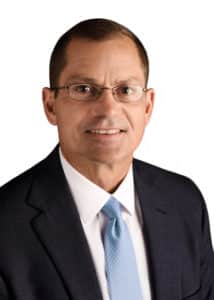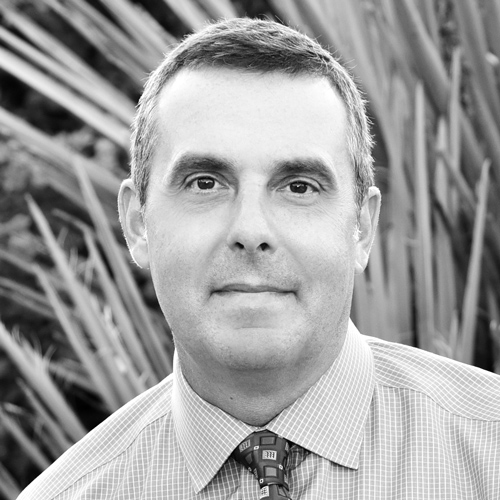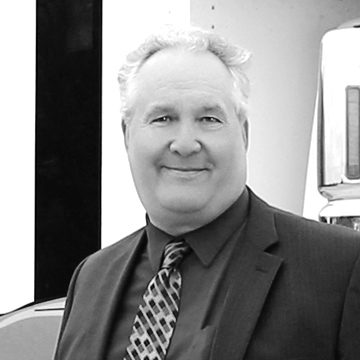When people think about health at a hospital, their first thoughts naturally gravitate to the sick patients being treated by nurses and doctors—but there can be many interpretations of what health means. At Carolinas Healthcare System (CHS), a nonprofit healthcare network serving the Southeast, senior vice president in human resources Mick Fisher has made it his mission to maintain the health of the organization’s employees, something that inevitably trickles down to the hospital’s clients.
When Fisher talks about health, he envisions three pillars: physical, financial, and emotional. He asserts that all three must be in place for employees to thrive and bring their best to the organization, just as the organization brings its best to them. “You take any one of those pillars out of the picture and your experience will not be what you would want,” Fisher explains. “We feel it is a shared responsibility between the
organization and the teammate.”
Fisher spent twenty-five years at the same retail company before deciding to make a move to healthcare. The decision had been a long time coming, but the clincher came when Fisher saw all the people who came to honor his father, a Methodist minister, at his retirement ceremony. Numerous people from all of the churches Fisher’s father hadministered over the past four decades came out to honor him.

“Seeing all those people show up to recognize my father had an impact on me,” Fisher says. “It put his career in pretty stark contrast with mine, working in for-profit. I decided I wanted to use my expertise in HR to serve something with more intrinsic value.”
Thinking at first about the nonprofit sector in general, Fisher eventually settled on healthcare because the field would give him a chance to use his skills. CHS’s mission—to improve health, elevate hope, and advance healing for all—made it seem like the perfect place. “We accept all patients regardless of their background or ability to pay,” Fisher says.
Despite the obvious differences between retail and healthcare, Fisher felt that the HR principles in both fields were similar. One notable difference was that the multitude of roles at CHS was ten times the number in his previous organization.
Once he got his bearings, Fisher and his teams began to implement a plan of wellness for employees. Part of his job is to administer benefits that include salaries and health and retirement plans. But those benefits won’t serve their purpose, Fisher says, unless the team members gain knowledge about preventive health and become proactive in their own physical, financial, and emotional wellness.
To that end, Fisher has taken on the role of educator, working to coach and influence behavior. A lot of these efforts take the form of employee engagement initiatives. His teams began voluntary financial education classes that attracted fourteen thousand people in the initiative’s first year, with topics ranging from basic budgeting to retirement planning. To help with the physical aspect of wellness, the company holds walks at lunchtime and on Saturdays during which team members mingle with company leaders and get their hearts pumping. There are also intramural sports leagues and fitness-in-the-park days. The activities are wildly popular: CHS has been in the 75th percentile of employee engagement in the industry for the past seven years.
“We are focused on teammate engagement because we know the difference a highly engaged workforce can have on patient care.”
“We have a huge number of engagement initiatives across HR and CHS,” Fisher says. “We are focused on teammate engagement because we know the difference a highly engaged workforce can have on patient care.”
The third pillar, emotional health, is often overlooked, though Fisher feels it is equally important. There is a strong relationship between financial, physical, and emotional health, Fisher explains. Issues with finances or physical health problems can easily take a toll on one’s emotional health. “It is this relationship that drives our focus on activities to support healthy diets, fitness, and financial education,” he says. “We also feel it important to let our teammates know they are appreciated. I have great partners within the HR team that organize multiple recognition events throughout the year to let teammates know they are valued.” Every Monday, they send out an inspirational e-mail that isn’t related to business, and there is also an e-card program that gives team members the ability to send happy birthday notes, thank-you notes, and notes of congratulations. The forum is used by tens of thousands of team members.
“The key is that we have multiple ways teammates can connect with each other, with the organization, and with their leaders, inside and outside of work,” Fisher says. “They aren’t high-cost activities, but they drive engagement.”
All of this helps to bring HR out of the bureaucratic, administrative realm and into a more meaningful role that actualizes the reasons Fisher made the move from retail: to contribute to a humanistic enterprise.
“Being on the total rewards side, the way we design and administer benefits can help influence behavior to improve health, to pay attention to financials, and to maintain a good emotional state,” he says. With those three pillars in place, HR at CHS is standing on a solid foundation.
At Bank of America Merrill Lynch, our mission is people-centric, helping individuals and companies pursue health and financial wellness. Working with employers through a strategic combination of benefits design,
educational outreach, guidance, and support, together we can help employees create better money habits, gain confidence in their financial decisions, and build the financial security to help them become both “physically and financially fit.” We connect what is important to employees, considering their life priorities and goals, along with the knowledge, tools, and support they need to empower them to find financial balance and equip them to succeed.

